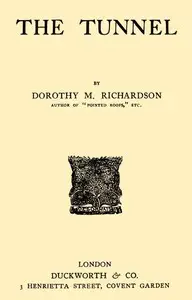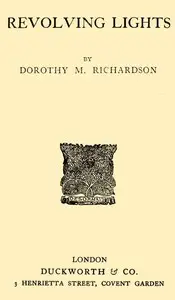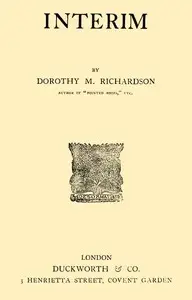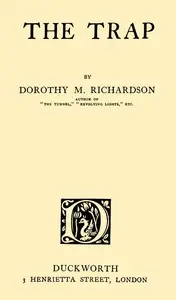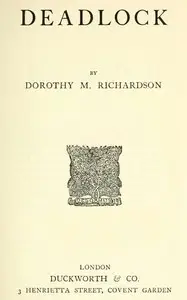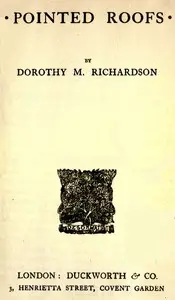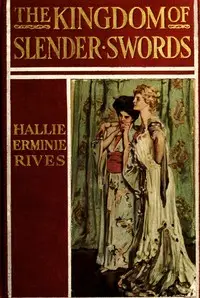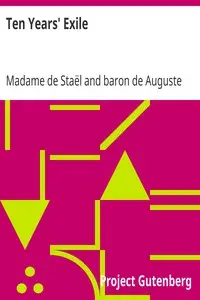"Pointed Roofs: Pilgrimage, Volume 1" by Dorothy M. Richardson is a story, set in the early 1900s, that follows Miriam Henderson as she leaves home and goes to Germany to become a governess while trying to figure out who she is. The book shows Miriam's inner thoughts as she deals with being alone, trying to fit in, and what it means to be a woman during that time, using a stream-of-consciousness style. The story opens with Miriam thinking about her life before she leaves, her family, and what she's leaving behind, creating a sad feeling as she thinks about her new duties and being lonely. As she gets ready to go to the German school, the story shows her worries, her dreams, and troubling thoughts about how her life will change forever. While she wants to be independent and grow as a person, she's also scared of not being good enough, feeling like an outsider, and wanting to connect with people in her new life.

Pointed Roofs: Pilgrimage, Volume 1
By Dorothy M. (Dorothy Miller) Richardson
A young woman's journey into adulthood takes her far from home, where she confronts her fears and desires as she seeks to define herself in a new world.
Summary
About the AuthorDorothy Miller Richardson was a British author and journalist. Author of Pilgrimage, a sequence of 13 semi-autobiographical novels published between 1915 and 1967—though Richardson saw them as chapters of one work—she was one of the earliest modernist novelists to use stream of consciousness as a narrative technique. Richardson also emphasises in Pilgrimage the importance and distinct nature of female experiences. The title Pilgrimage alludes not only to "the journey of the artist ... to self-realisation but, more practically, to the discovery of a unique creative form and expression".
Dorothy Miller Richardson was a British author and journalist. Author of Pilgrimage, a sequence of 13 semi-autobiographical novels published between 1915 and 1967—though Richardson saw them as chapters of one work—she was one of the earliest modernist novelists to use stream of consciousness as a narrative technique. Richardson also emphasises in Pilgrimage the importance and distinct nature of female experiences. The title Pilgrimage alludes not only to "the journey of the artist ... to self-realisation but, more practically, to the discovery of a unique creative form and expression".

